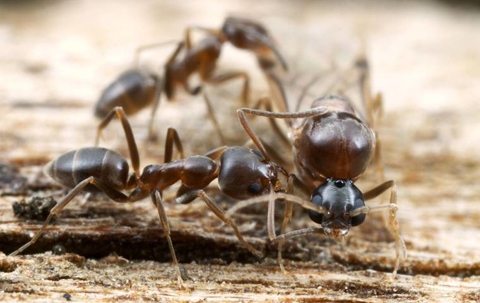The scorching Arizona sun is ablaze now in July. We might not give much thought to it, but we aren’t the only ones getting thirsty at the height of summer. Pests will seek out sources of water, and this could mean they’ll infiltrate your home. Canopy Pest Control provides pest control in Queen Creek, and we're well aware of a certain pest that not only doesn’t belong in your home, but it also doesn’t belong in the country.
Are Argentine Ants An Invasive Species?
The Argentine ant has stowed away to several unwelcoming countries across the globe. It is an invasive species here in Arizona, and it causes several problems for the ecosystem. Such problems include:
- The ability to develop substantially large colonies
- Cultivation of large honeydew-producing insects like aphids in vegetative areas
- Disruption to indigenous ant species, pollinating insects, and larger vertebrates
Because it is invasive, the Argentine ant doesn’t have many predators. It is also aggressive to many species that aren’t normally inhibited by ants.
It won’t take much time to develop an Argentine ant supercolony on your property. Their ability to build these large colonies and their desire to farm aphids for honeydew make them a threat to vegetation. Luckily, Argentine ants do not tend to bite people.
What To Know About The Lifecycle of Argentine Ants
The summertime is when Argentine ants propagate new generations of egg-laying queens, and there may be more than one Argentine ant queen on your property. Like all ants, the reproductive swarmers have wings that they shed after mating. If you see Argentine flying ants near your Queen Creek home, it means a colony is nearby and growing rapidly.
The lifecycle of an Argentine ant has four stages that take two to three months to maturation. The stages are:
- Egg
- Larva
- Pupa
- Adult
Once the queen lays the eggs, it takes them up to 28 days to hatch. The emerging larvae take 11 to 60 days to develop to the pupal stage. This third stage is between 10 to 25 days.
Spraying for these ants isn’t an effective ant control solution because their colonies can be completely subterranean. The Argentine ant infestation on your property will most likely live outside, but they’ll feel free to come inside the house, too. In urban areas, these ants begin coming into homes to seek water on dry days.
Getting Rid Of Argentine Ants
Argentine ants are crafty. They’re known to get into the fridge and crawl through the spiral of sealed jar lids. They also crawl on people when they sleep for the moisture.
The best ways to fight off infestations are to:
- Prevent colonies by removing water sources.
- Prevent home intrusions by removing debris from the yard, sealing windows, and sealing trash cans.
- Don’t use spray.
Spraying insecticides might seem like a good solution, but it could make the problem worse. If you attack the colony, workers and queens will pick up and leave to other locations. This creates a number of sub-colonies and a disappointing number of ant casualties.
Total Ant Control For Queen Creek Residents
Argentine ants in Queen Creek can quickly become stressful. Waiting to see if you’ve baited properly for the Argentine ant colony on your property is surely not the best option.
At Canopy Pest Control, we know how to gauge the attack on large colonies of this invasive species. We also believe in an environmentally friendly organic approach. We know that Queen Creek homeowners can see all sorts of pests, and we want peace of mind in our community. That’s why we’ll match any price for pest control to make sure we do it because we do it right. Contact us and schedule an inspection today.

